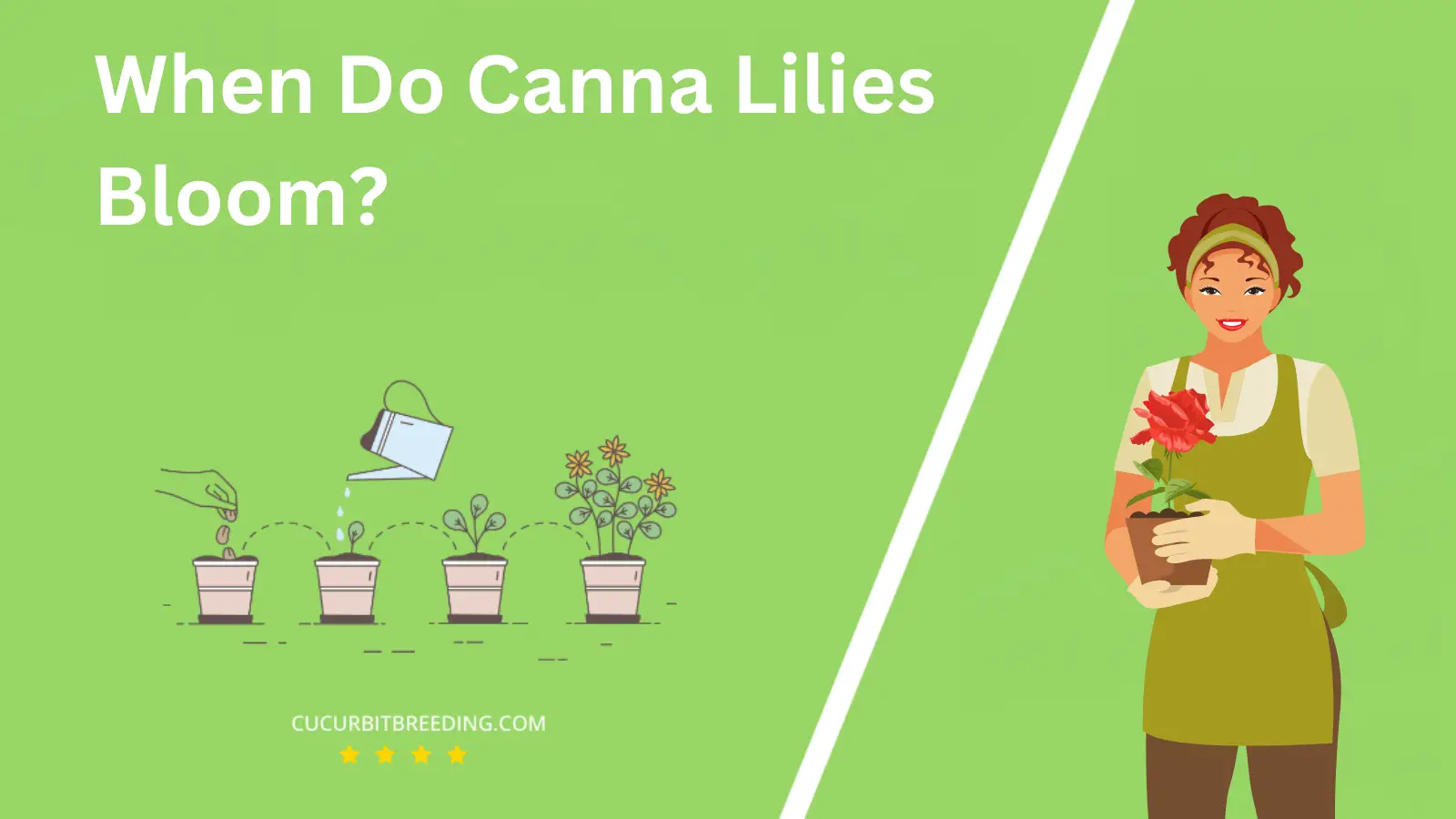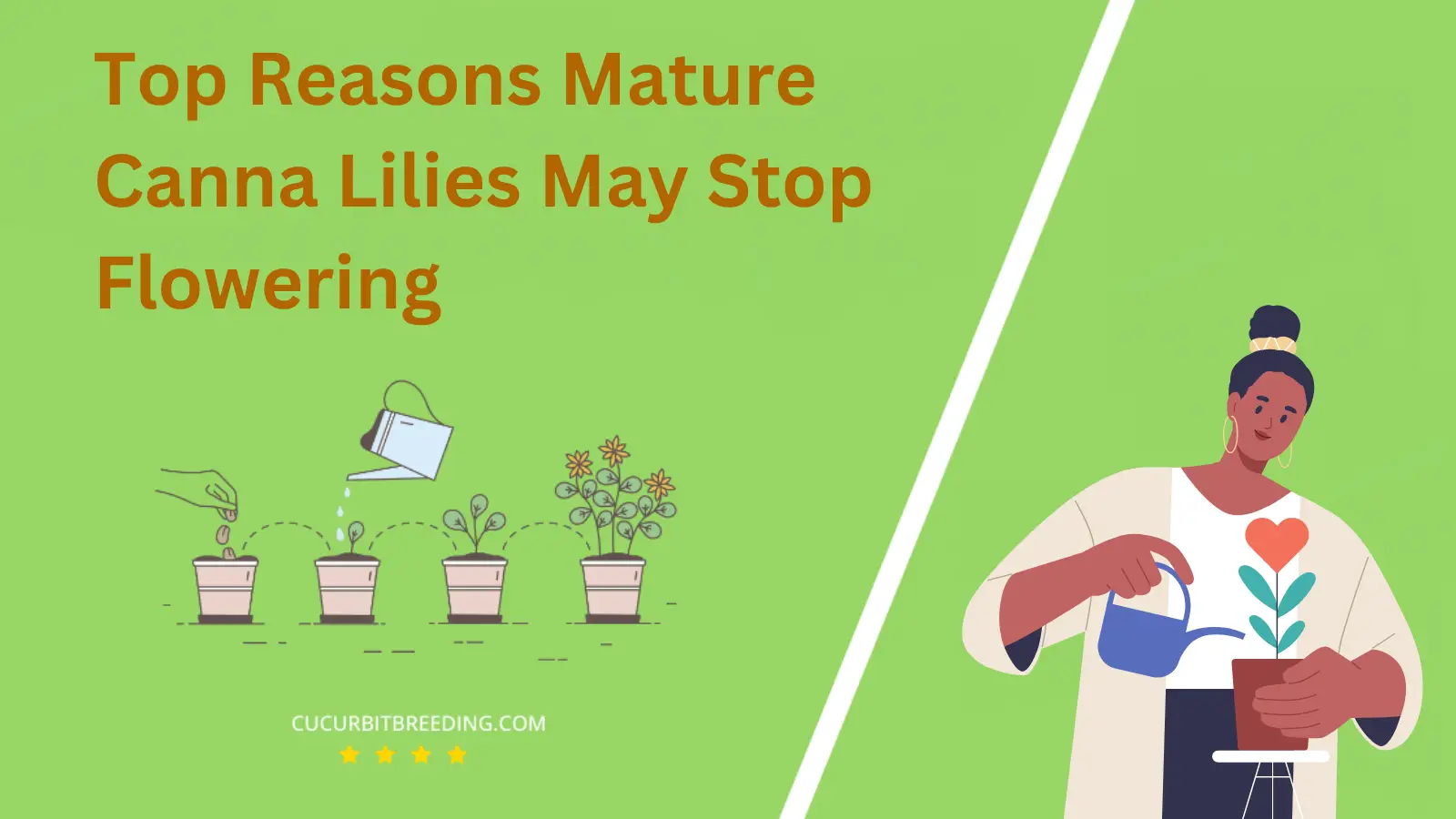
When discussing the enchanting world of gardening, the question of “When Do Canna Lilies Bloom?” is certainly one that sparks curiosity. These vibrant flowering plants, renowned for their tropical allure, have a captivating bloom cycle that might surprise you.
Understanding their blooming pattern not only enhances your horticultural knowledge but also helps in planning your garden for a stunning display. Let’s delve into the intriguing life cycle of these beauties.
When Do Canna Lilies Bloom?
Canna Lilies typically bloom during the late spring to early fall, specifically between May and October. The exact time can vary based on the specific variety of the plant and the climate conditions. In tropical or subtropical regions, these plants can bloom year-round.
| Stage | Description |
|---|---|
| Germination | (Spring – Summer, specifically April – June) |
| Growth | Spring and summer (March to August). |
| Blooming | Summer (June-August) |
| Dormancy | Winter (December-February) |
How Long Do Canna Lilies Bloom?
Canna Lilies typically bloom from late spring to early fall, or basically during the warmest months of the year. This period usually lasts from May until October.
How Light Affects Canna Lilies Blooms?
Canna Lilies are sun-loving plants and their blooming is significantly affected by light. They require a minimum of six hours of direct sunlight each day for optimum blooming. The more sunlight they receive, the more they bloom. Lack of sufficient light can lead to fewer flowers and can also cause the plants to become leggy as they reach for the sunlight.
However, while they love sunlight, too much of intense midday sun in hotter climates can lead to sunburn on the leaves. In such cases, providing some afternoon shade can help protect the plants. So, while light is crucial for Canna Lilies to bloom, it’s important to balance the exposure, particularly in regions with intense summer heat.
Will Canna Lilies Bloom the First Year You Plant Them?
Yes, Canna Lilies will bloom in the first year you plant them. These plants typically bloom from late spring to early fall, depending on when they were planted. However, they require full sun and regular watering to ensure healthy growth and blooming.
Will Canna Lilies Bloom Every Year?
Canna Lilies are perennial plants, meaning they can bloom every year. However, their ability to do so depends on the care they receive and the conditions in which they are grown. They need plenty of sunlight, water, and the right soil conditions to bloom. In colder climates, Canna Lilies require special winter care, which includes digging up the rhizomes and storing them indoors until spring. With the right care, Canna Lilies can provide beautiful blooms year after year.

Should I Deadhead Canna Lilies Blooms?
Yes, you should deadhead Canna Lilies blooms. Deadheading, or removing spent flowers, encourages the plant to produce more blooms and prevents it from diverting energy into seed production. This practice keeps your Canna Lilies looking neat and promotes a healthier plant. However, be careful not to remove the flower spike entirely, as new buds often form along the spike.
Top Reasons Mature Canna Lilies May Stop Flowering

Mature Canna Lilies may stop flowering due to several reasons. Firstly, inadequate sunlight. These plants require a minimum of six hours of direct sunlight daily. If they are in a shaded area, they may not bloom. Secondly, improper watering. Overwatering or underwatering can stress the plant, inhibiting flowering.
Thirdly, nutrient deficiencies. Canna Lilies need well-fertilized soil to bloom. If the soil lacks essential nutrients like phosphorus, which promotes flowering, the plant may stop blooming. Fourthly, disease or pest infestation can also affect the flowering. Pests and diseases not only damage the plant but also divert the plant’s energy away from flowering.
Lastly, improper pruning. If the spent flowers are not removed, the plant will focus its energy on seed production rather than producing new flowers. Similarly, if the plant is pruned too heavily, it might not have enough energy to flower.